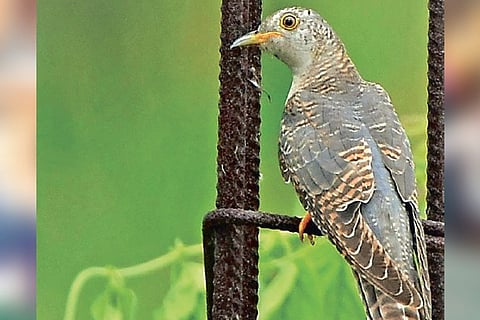

Chennai
Eurasian Cuckoo and long-tailed Shrike, both winter migrants from the Himalayas have also visited Pallikaranai marshland. “Eurasian cuckoo is documented for the first-time near Chennai in Pallikaranai and is a regular visitor to other parts of south India,” said KVRK Thirunaranan, founder, The Nature Trust. Foresters and bird watchers have also noticed large arrival of falcon, harrier and eagles in Chengalpattu and Kancheepuram districts, he said.
While the inadequate rainfall had resulted in less migration of wetland birds-like ibis, pelican, spoonbill and painted stork near Chennai, the movement of terrestrial migrants like wagtail, pitta, shrike and Eurasian cuckoo are encouraging in Pallikaranai and Perumbakkam wetlands, he said. Long-tailed shrike another small bird which comes from the Himalayas was recorded in 2017, 2018 and now. This bird was not documented last year by our bird watchers, he said.
Eurasian cuckoo is a bird which has a main diet of caterpillars. It breeds in Europe and Himalayas, Nepal, Myanmar, West and North China and Mongolia in Asia. In winter, it migrates to Africa. It regularly stays in South India for food and rest and then migrates to Africa, Thirunaranan said.
“Across bird watchers are recording the arrival of falcons, osprey, kestrel and harriers in large numbers and these are birds that prey on snakes, frogs, fishes and birds in water bodies. The objective of the predatory birds is to prevent the overpopulation of reptiles and aquatic animals that breed during monsoon,” said K Brinda, conservation scientist, Biodiversity Conservation Foundation Tiruchy. Efforts should be taken that there is no human disturbance in these grasslands and wetlands so that the bird migration cycle is not affected.
Destruction of wetlands will reduce the visit of predatory birds and this will help the snake and frog population to increase. Subsequently, unchecked snake population will lead to more stray cases, the biologist explained. However, as usual the migratory birds have arrived in Tamil Nadu and there is a change in some species. By December end we will get a clear picture on this year status, added Brinda.
Visit news.dtnext.in to explore our interactive epaper!
Download the DT Next app for more exciting features!
Click here for iOS
Click here for Android